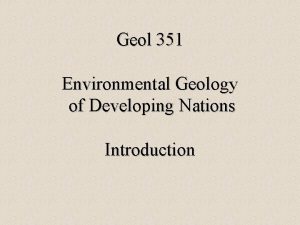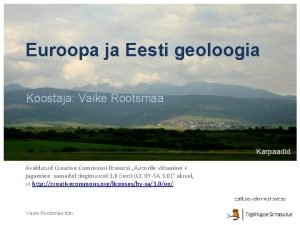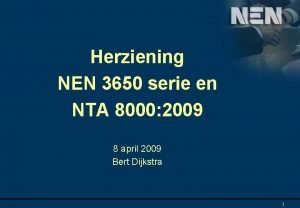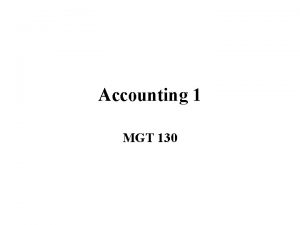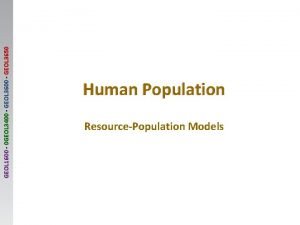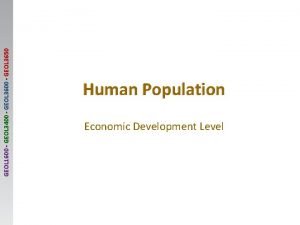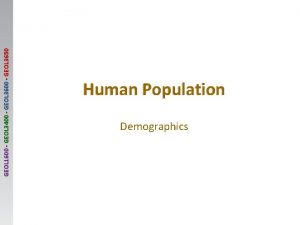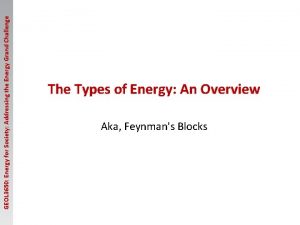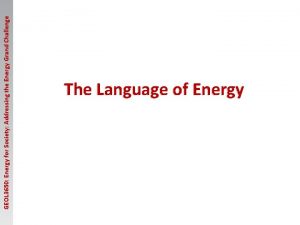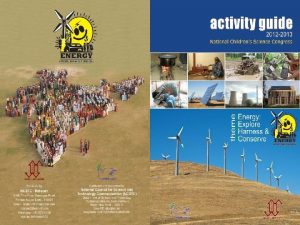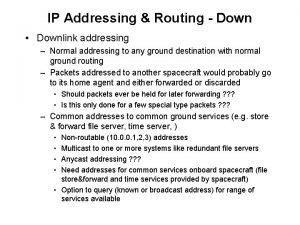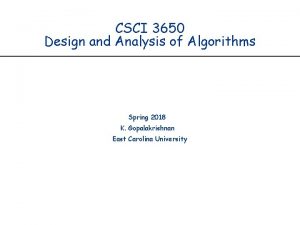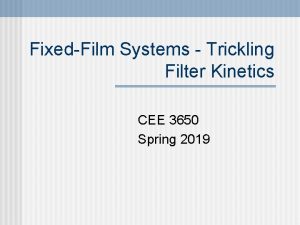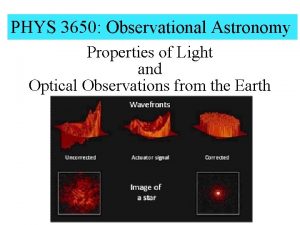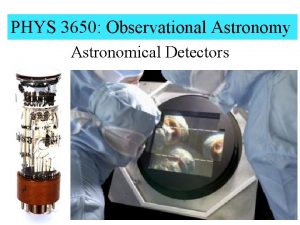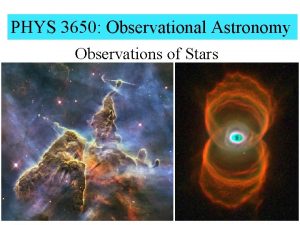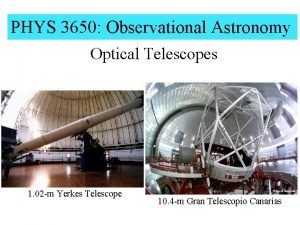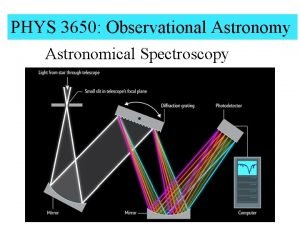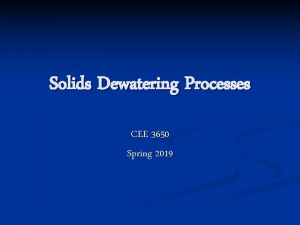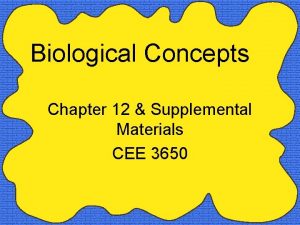GEOL 3650 Energy for Society Addressing the Energy






























- Slides: 30

GEOL 3650: Energy for Society: Addressing the Energy Grand Challenge Electricity: Powering the World Nuclear Power: Nuclear Reactors

GEOL 3650: Energy for Society: Addressing the Energy Grand Challenge Nuclear Reactors Thermal Generation of Electricity 12 -Jun-21 2

GEOL 3650: Energy for Society: Addressing the Energy Grand Challenge Nuclear Reactors Nuclear Generation of Electricity 12 -Jun-21 3

GEOL 3650: Energy for Society: Addressing the Energy Grand Challenge Nuclear Physics: III. Nuclear Transformation Nuclear Reactions: • fuel of nuclear reactor is 235 U 12 -Jun-21 4

GEOL 3650: Energy for Society: Addressing the Energy Grand Challenge Nuclear Reactors Chain Reaction 12 -Jun-21 5

GEOL 3650: Energy for Society: Addressing the Energy Grand Challenge Nuclear Reactors Tasks fuel: pellets of enriched or natural uranium or uranium and plutonium oxide • fuel • moderator: material to slow the fast neutrons emitted during fission down to slow (thermal) neutrons coolant: liquid or gas circulated through the reactor core to remove the heat • coolant produced by fission rods: long cylinders of neutron-absorbing material (e. g. cadmium, • control rods hafnium, or boron) that are inserted or withdrawn from the reactor core to control the rate of the sustained chain reaction vessels/tubes: a steel vessel containing the reactor core, coolant or • pressure vessels/tubes moderator generator: heat exchanger where the coolant transfers its heat to • steam generator water to convert it to steam – steam is piped to a turbine-generator to generate electricity; system: a building housing the reactor core • contaminant system – designed to protect the core from external influences – contain radioactive material in the event of an accident – typically a concrete (up to a meter thick) and steel structure 12 -Jun-21 6

GEOL 3650: Energy for Society: Addressing the Energy Grand Challenge Nuclear Reactors Moderator • fate of 235 U nucleus is capturing a neutron depends upon the energy, i. e. speed, of the neutron • two possibilities are: – high energy (fast) neutrons have a small chance of causing fission events – low energy (slow or thermal) neutrons are likely to cause the uranium nucleus to split • fission-produced neutrons produced have high energy, i. e. fast – unlikely to cause subsequent fission events – energy state can be lowered through collisions with other atomic particles • moderator: substance that slows down neutrons through collisions that transfers energy from the neutron to the impacted particle – energy transfer most efficient if the colliding objects have similar masses – best moderators have a mass similar to that of a neutron 12 -Jun-21 7

GEOL 3650: Energy for Society: Addressing the Energy Grand Challenge Nuclear Reactors Moderator 12 -Jun-21 8

GEOL 3650: Energy for Society: Addressing the Energy Grand Challenge Nuclear Reactors Moderator • three types of common moderators are: – light water: water with isotopic composition similar to natural water • water also absorbs neutrons reducing number of potential fission event • reactor using natural uranium with a normal (light) water moderator cannot sustain a chain reaction • can be offset by enriching uranium so contains about 3% 235 U • reactors that use natural water as a moderator are light-water reactors (LWR LWR) – heavy water • • : water enriched in deuterium isotope, because bigger less efficient at energy transfer doesn’t absorb neutrons, can use natural uranium difficult and expensive to make HWR) heavy water reactors (HWR – graphite: solid carbon that does not absorb neutrons • because more massive than neutron, energy transfer not as good, more collisions • solid (good), flammable (bad) • used in first generation Magnox reactors in England, not used now because of safety 12 -Jun-21 9

GEOL 3650: Energy for Society: Addressing the Energy Grand Challenge Nuclear Reactors Fuel 12 -Jun-21 10

GEOL 3650: Energy for Society: Addressing the Energy Grand Challenge Nuclear Reactors Fuel 12 -Jun-21 11

GEOL 3650: Energy for Society: Addressing the Energy Grand Challenge Nuclear Reactors Reactor Design Tree 12 -Jun-21 12

GEOL 3650: Energy for Society: Addressing the Energy Grand Challenge Nuclear Reactors Dominant Reactors • light water – boiling water (BWR) – pressurized water (PWR) • Russian - VVER • heavy water – CANDU • graphite moderated – Russian – RMBK (designed to be refueled on line (plutonium production) 12 -Jun-21 13

GEOL 3650: Energy for Society: Addressing the Energy Grand Challenge Nuclear Reactors U-Pu Nuclear Fuel Cycle – Once Through (Open) 12 -Jun-21 14

GEOL 3650: Energy for Society: Addressing the Energy Grand Challenge Nuclear Reactors U-Pu Nuclear Fuel Cycle – Reprocessing (Closed) 12 -Jun-21 15

GEOL 3650: Energy for Society: Addressing the Energy Grand Challenge Nuclear Reactors Fuel Changes • two broad classes of new elements in the fuel rods are: products: elements produced when fissile elements, e. g. uranium– fission products 235 (235 U) or plutonium-239 (239 Pu), undergo fission elements: elements produced when uranium – transuranic (actinides) elements atoms absorb a neutron • often undergo a series of nuclear reactions that transform them into higher (Z > 92), heavier elements 12 -Jun-21 16

GEOL 3650: Energy for Society: Addressing the Energy Grand Challenge Nuclear Reactors Health Risks from Radiation • risks are: – electromagnetic radiation: gamma rays – particle radiation • neutron: generally only associated with active reactor • alpha • beta 12 -Jun-21 17

GEOL 3650: Energy for Society: Addressing the Energy Grand Challenge Nuclear Reactors Health Risks from Radiation: EMR 12 -Jun-21 18

GEOL 3650: Energy for Society: Addressing the Energy Grand Challenge Nuclear Reactors Health Risks from Radiation: Shielding 12 -Jun-21 19

GEOL 3650: Energy for Society: Addressing the Energy Grand Challenge Nuclear Reactors Concerns • handling of radioactive material • disposal of nuclear waste, particularly spent nuclear fuel (SNF) • reactor decommissioning • nuclear safety and accidents • terrorism • nuclear weapons proliferation 12 -Jun-21 20

GEOL 3650: Energy for Society: Addressing the Energy Grand Challenge Nuclear Reactors Concerns: Waste Disposal 12 -Jun-21 21

GEOL 3650: Energy for Society: Addressing the Energy Grand Challenge Nuclear Reactors Concerns: Waste Disposal • types of waste: (VLLW): Wastes that have very low levels of radiation – very Low-Level Waste (VLLW) which are not harmful to the biosphere • exempt waste • two primary sources: – material from dismantling/rehabilitation of nuclear facilities – other industries, e. g. food processing, chemical, steel, oil & gas. • VLLW does not require shield or isolation. – low-level Waste (LLW): low radioactive waste that does not require shielding during transport and can be buried at shallow depths Mostly generated by hospitals, industry and the nuclear fuel cycle consists of paper, rags, filters, clothing, etc mostly short-lived radiation comprises 90 % of the volume of radwaste, but only 1 % of the radioactivity often compacted or incinerated in a closed container to reduce its volume before disposal • held for only a few months during which time their radioactivity decreases enough for them to be disposed of as ordinary solid waste • • • 12 -Jun-21 22

GEOL 3650: Energy for Society: Addressing the Energy Grand Challenge Nuclear Reactors Concerns: Waste Disposal • intermediate-level Waste (ILW): material with higher radioactivity that requires shielding – – – mostly from the nuclear industry with materials such as resins, chemical sludges, metal fuel cladding, etc includes contaminated material from decommissioned nuclear reactors may be encased in concrete or bitumen for disposal comprises 7 % of radwaste volume and 4 % of radioactivity waste with short-lived isotopes are buried, but long-lived waste from reprocessing disposed deep underground. • high-level Waste (HLW): waste that contains fission products and transuranics with high (often lethal) levels of radioactivity and heat that require shielding and cooling consists of either spent fuel from electricity generation or material from reprocessing will remain radioactive for either long or short terms contains nearly 95 % of the radioactivity of radwaste, but is volumetrically small requires special shielding during handling and transport encapsulated and disposed of in a geological repository where separated from the biosphere for hundreds of thousands of years – it contains two very different types of highly radioactive material: (TRU): elements generated by neutron bombardment of heavy elements in the • transuranic waste (TRU reactor core, they have very long half-lives hence transuranic waste is marked by low radioactivity products: isotopes produced by the fission of fissile elements in the fuel rods, mostly uranium • fission products 235 and plutonium-239 – – – 12 -Jun-21 23

GEOL 3650: Energy for Society: Addressing the Energy Grand Challenge Nuclear Reactors Concerns: Waste Disposal • wide variety of options for disposing of nuclear waste have been investigated – ocean disposal: • sub-seafloor • oceanic trench • artificial island – ice field disposal - heat-generating waste – long-term surface disposal – launch into space – geological disposal: • • 12 -Jun-21 deep borehole shale formations salt formations mined repository 24

GEOL 3650: Energy for Society: Addressing the Energy Grand Challenge Nuclear Reactors Concerns: Reactor Decommissioning 12 -Jun-21 25

GEOL 3650: Energy for Society: Addressing the Energy Grand Challenge Nuclear Reactors Concerns: Reactor Decommissioning • U. S. Nuclear Regulatory Commission and IAEA define three alternative decommissioning options: – DECON: immediate removal or decontamination of radioactive equipment, structures, or facility components and site release for unrestricted use • avoids deterioration of the facility through corrosion and other degradation processes thereby making decommissioning more predictable SAFSTOR: plant is defueled, plumbing drained, and the site secured – SAFSTOR • maintained and monitored in a safe condition to allow radioactivity to decay to lower levels • after 10 to 80 years, the plant is dismantled or decontaminated • site ultimately released for other uses. ENTOMB: reactor and/or facility permanently encased in a structurally – ENTOMB resistant material • the site is maintained and monitored until radioactivity decays to levels that no longer require monitoring • leaves a site with a permanent structure 12 -Jun-21 26

GEOL 3650: Energy for Society: Addressing the Energy Grand Challenge Nuclear Reactors Concerns: Reactor Decommissioning - Funding • three commonly accepted mechanisms for ensuring adequate funds will be available for decommissioning prepayment: operator deposits funds to cover decommissioning in a – prepayment separate account before plant start-up • may be a trust, escrow account, government fund, certificate of deposit or government security • company does not control and it is not counted among its assets • company can access this account only for decommissioning expenses. – external sinking fund: percentage of revenues is diverted to a trust fund for decommissioning costs • the fund grows, slowly at first but more rapidly as decommissioning • primary mechanism used to fund decommissioning in the U. S. insurance: purchases one of these types of – surety fund, letter of credit or insurance financial instruments to ensure decommissioning costs are covered • used if the company defaults on plant clean-up 12 -Jun-21 27

GEOL 3650: Energy for Society: Addressing the Energy Grand Challenge Nuclear Reactors Concerns: Accidents accidents: accidents happening in the reactor core itself • reactor accidents accident: accidents in which the coolant used to extract – loss of coolant accident heat from the reactor core is lost, the resultant build-up in heat can cause fuel and its cladding to melt thereby compromising the integrity of systems designed to contain fission products and damaging the reactor core; loss of coolant in the stream system can result in radioactive escape with vented steam; accident: build-up of heat in reactor due to decay heat from – decay heat accident fission products increase from reactor core damage or exposure accidents: failure of different nuclear plant systems, e. g. – equipment accidents control systems, sensors, automatic systems, valves, software, etc. , that cause the reactor to malfunction; errors: failure of human operators to take appropriate action, – human errors result from inattention, inadequate training, incorrect decisions, falsification of records, etc 12 -Jun-21 28

GEOL 3650: Energy for Society: Addressing the Energy Grand Challenge Nuclear Reactors Concerns: Accidents accident: occurs when fissile materials are inadvertently • criticality accident combined in a critical mass thereby initiating an unintended chain reaction, can happen at reactor, fuel processing plant , or laboratory, results in significant radiation release, especially neutron • transportation accident: accidents that occur during transport of nuclear material, may be accidental or deliberate source: loss, theft, or abandonment of radioactive sources • orphan source trafficking: sale of nuclear material to individuals or • illegal trafficking organizations not approved for handling them, not technically an accident 12 -Jun-21 29

GEOL 3650: Energy for Society: Addressing the Energy Grand Challenge Summary 12 -Jun-21 30
 Geology 351
Geology 351 Settelünke geol
Settelünke geol Flat addressing vs hierarchical addressing
Flat addressing vs hierarchical addressing If 16 700 j of work is done
If 16 700 j of work is done Vlinderdasmodel voorbeeld
Vlinderdasmodel voorbeeld Mgt-130
Mgt-130 Gertler econ
Gertler econ Fspos vägledning för kontinuitetshantering
Fspos vägledning för kontinuitetshantering Typiska novell drag
Typiska novell drag Tack för att ni lyssnade bild
Tack för att ni lyssnade bild Returpilarna
Returpilarna Varför kallas perioden 1918-1939 för mellankrigstiden
Varför kallas perioden 1918-1939 för mellankrigstiden En lathund för arbete med kontinuitetshantering
En lathund för arbete med kontinuitetshantering Personalliggare bygg undantag
Personalliggare bygg undantag Tidböcker
Tidböcker Anatomi organ reproduksi
Anatomi organ reproduksi Densitet vatten
Densitet vatten Datorkunskap för nybörjare
Datorkunskap för nybörjare Tack för att ni lyssnade bild
Tack för att ni lyssnade bild Mall för debattartikel
Mall för debattartikel Autokratiskt ledarskap
Autokratiskt ledarskap Nyckelkompetenser för livslångt lärande
Nyckelkompetenser för livslångt lärande Påbyggnader för flakfordon
Påbyggnader för flakfordon Tryck formel
Tryck formel Offentlig förvaltning
Offentlig förvaltning Lyckans minut erik lindorm analys
Lyckans minut erik lindorm analys Presentera för publik crossboss
Presentera för publik crossboss Teckenspråk minoritetsspråk argument
Teckenspråk minoritetsspråk argument Bat mitza
Bat mitza Treserva lathund
Treserva lathund Luftstrupen för medicinare
Luftstrupen för medicinare
